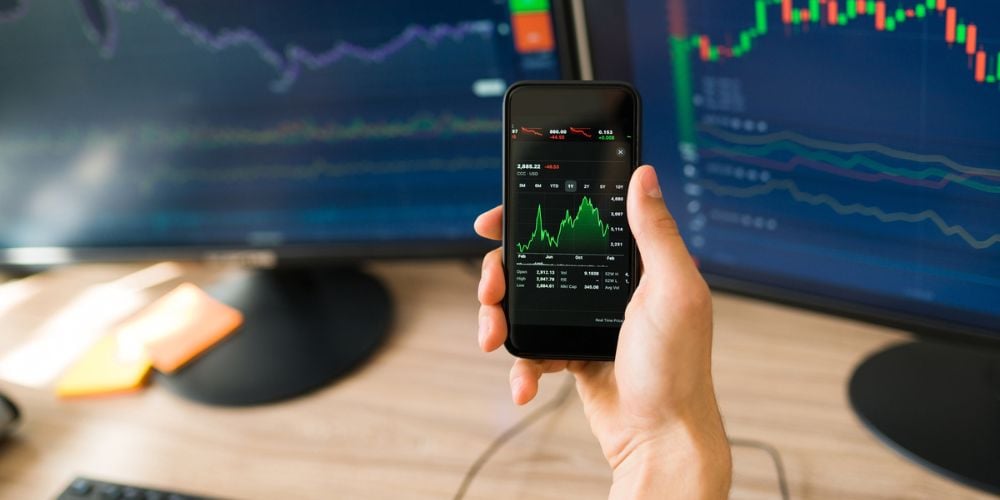In the complex world of financial markets, understanding various phenomena can provide a significant edge.
One such concept, which holds particular relevance for options traders, is the volatility smile.
This concept not only sheds light on market dynamics but also helps in strategizing trades with a keen insight into potential market movements.
What Is A Volatility Smile?
In financial terms, volatility represents the degree to which the price of a security fluctuates over time. It’s a measure of the dispersion of returns for a given security or market index.
While historical volatility calculates past market movements, implied volatility looks forward, derived from the price of options.
The volatility smile is a graphical curve that shows the implied volatility of options across different strike prices for the same expiration date. The curve forms a shape that resembles a smile, hence the name. This phenomenon reveals much about market sentiments and expectations.

Origins of the Volatility Smile
The concept of the volatility smile gained attention after the stock market crash of 1987. Prior to this event, the widely used Black-Scholes model assumed a constant volatility across strike prices.
However, the market’s behavior contradicted this assumption, presenting a new puzzle for theorists and practitioners alike.
Factors Contributing to the Formation of a Volatility Smile
The formation of a volatility smile can be attributed to several factors. Market psychology plays a significant role, as investors’ fear and greed affect option prices.
Demand for out-of-the-money (OTM) options for insurance purposes and speculation also contribute.
Additionally, event risks, such as earnings reports or economic data releases, can skew the curve due to the anticipated reaction of the security price.
Types of Volatility Smiles
Equity Markets
In equity markets, volatility smiles often indicate that traders expect significant stock price movement.
For instance, in the case of a major stock index, the implied volatility for OTM options might be higher, reflecting the uncertainty and higher insurance premium.
Currency Markets
Currency markets also exhibit volatility smiles, although the factors influencing their shape may differ due to the underlying economics and geopolitical risks affecting currencies differently than stocks or indices.
Analyzing a Volatility Smile
Components of a Volatility Smile
A volatility smile graphically displays the implied volatility for deep OTM, at-the-money (ATM), and deep in-the-money (ITM) options.
Typically, the volatility is lower for ATM options and higher for ITM and OTM options, forming the characteristic “smile.”
Interpretation of Volatility Smiles
The shape of a volatility smile provides insights into market expectations. A pronounced smile suggests that investors anticipate volatility, possibly due to an upcoming event or market uncertainty.
This has direct implications for option pricing, particularly affecting the premiums of ITM and OTM options.
Volatility Smile and Options Trading Strategies
For options traders, understanding the volatility smile is crucial. It helps in identifying potentially underpriced or overpriced options based on expected volatility.
Traders can use this information to adjust their strategies, focusing on options that offer the best value relative to their risk profile.

Challenges and Criticisms
Despite their utility, volatility smiles are not without criticism. Some argue that they reflect inefficiencies in the market or flaws in the option pricing models.
Moreover, relying solely on the volatility smile for trading decisions can be risky as it does not guarantee market movements.
Key Notes and Pro Tips
Traders should not use volatility smiles in isolation. Combining them with other market analysis tools and economic indicators can provide a more reliable basis for trading decisions.
New traders especially should approach with caution, taking time to understand the underlying causes of the smile and how it affects option pricing.
Frequently Asked Questions
Why does a volatility smile matter to an options trader?
For an options trader, the volatility smile offers insights into market sentiment and expectations, which are crucial for pricing options and crafting strategies.
How does the volatility smile challenge the Black-Scholes model?
The volatility smile suggests that implied volatility varies for different strike prices, contradicting the Black-Scholes model’s assumption of constant volatility.
Can the volatility smile predict market crashes?
While the volatility smile can indicate market anxiety or expectations of increased volatility, it is not a reliable predictor of market crashes.
What does it mean if the volatility smile is skewed to one side?
A skew in the volatility smile may suggest that the market is anticipating movements in a particular direction, indicating a bullish or bearish sentiment.
How frequently do volatility smiles change, and what influences these changes?
Volatility smiles can change with market conditions, including shifts in sentiment, economic data releases, and major geopolitical events.
Conclusion
The volatility smile is a nuanced concept that reveals much about market dynamics and expectations. For options traders, it provides valuable insights that can inform strategies and trading decisions.
While it introduces complexity, a thorough understanding of the volatility smile can significantly enhance one’s trading arsenal in the ever-evolving financial markets.


 Tags:
Tags:










